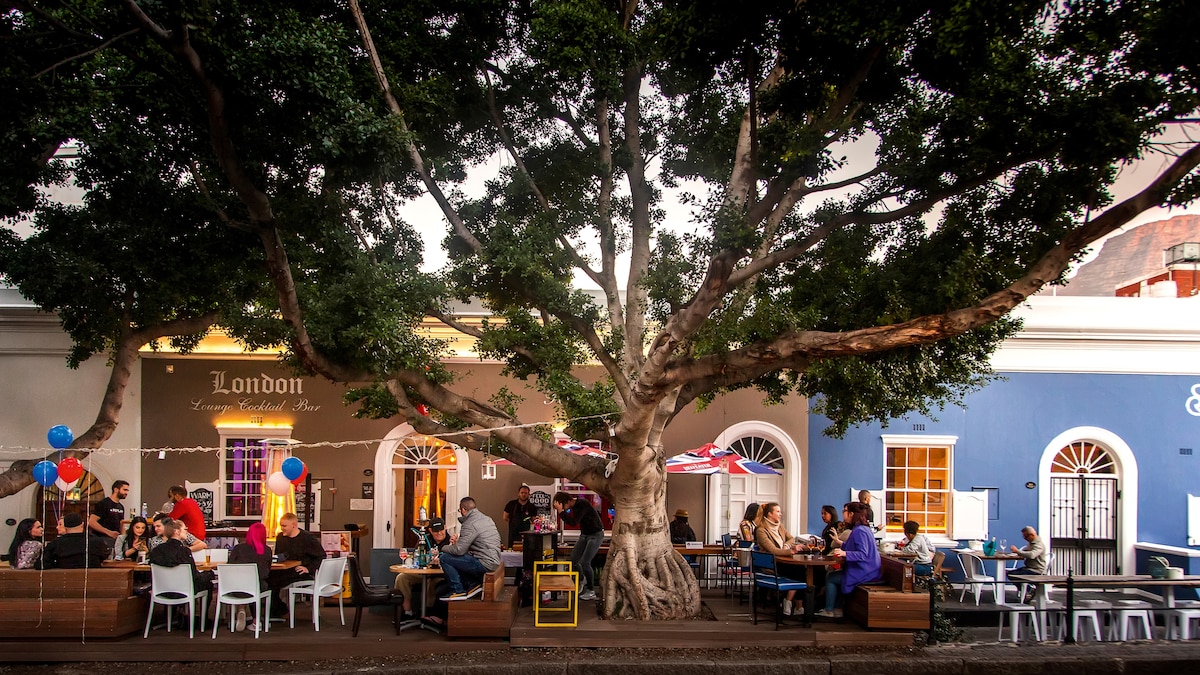This article was produced by National Geographic Traveller (UK).
“I’d been making ice cream for the longest time and I’d never bothered to make flavours that would’ve made sense in an African context,” says Tapiwa Guzha. “Once I realised that, I couldn’t ignore it.”
We’re sitting in Tapiwa’s cafe, Tapi Tapi, east of Cape Town’s centre. On the wall, there’s a cork board in the shape of Africa, with names of dishes, plants and smells pinned to their areas of association: post-harvest smoke, baobab and hibiscus around Zambia and the Democratic Republic of Congo; sage in the Western Cape of South Africa.
It’s Saturday, and Tapiwa — dressed in blue overalls — hops up constantly to serve customers. “This ice cream has Cape Malay spices, so cinnamon, cardamom, aniseed, ginger,” I hear him say. “This one is fonio — a grain from West Africa — and cinnamon, it’s a bit crunchy.” I opt for a nectarine and orange sorbet with spekboom — a South African succulent — and a chilli kick.
Tapiwa started experimenting with flavour while studying molecular biology at university. He realised he could make ice cream using leftover liquid nitrogen from the lab and adding whatever ingredients he had in the cupboard. “It started with playfulness, making substitutions to recipes I already knew,” he says. “It wasn’t an intentional thing. I just said, ‘what’s in the cupboard?’”
Using ice cream to showcase unusual pan-African flavours might be a new idea, but using available ingredients to alter traditional recipes isn’t. In fact, it’s how one of the region’s most famous cuisines came into being. Cape Malay food is a city staple, but its roots lie several thousand miles away in Southeast Asia. The Dutch colonised South Africa in 1652 and for the next 200 years brought free and enslaved people primarily from what’s now Indonesia. They cooked traditional dishes from their homelands, switching original ingredients for whatever was available, and often softening spices to suit European palates. The result was dishes that are still popular in Cape Town today, including fish curries, braised lamb stews and spiced, doughnut-like koeksisters.

The owners of Vadivelu create modern Indian dishes, described as ‘authentically South Africanly Indian’. Photograph by Teagan Cunniffe
To try the cuisine, I head to the Bo-Kaap neighbourhood, on the lower slopes of Signal Hill in the city centre. Many of the first arrivals from Asia made the area their home, and it’s now a heritage site, known for its brightly coloured houses. I pass some on Wale Street before climbing a flight of stairs to Chiappini Lane, where I arrive at Faeeza’s Home Kitchen.
Faeeza Abrahams relaxes on the couch in her front room, praising the beauty of Cape Town: a city with Table Mountain in its midst, bordered by the Atlantic Ocean and vineyard-carpeted mountain valleys. “Why would you live anywhere else?” she muses. Faeeza grew up in Bo-Kaap and learnt Cape Malay cooking from her mother. After decades selling sandwiches around the city, she launched her restaurant, as well as cooking classes teaching people about the role of spices in Cape Malay food. I get a demonstration, with a feast of cumin- and chilli-spiced chicken samosas and fluffy roti with a garlic and ginger chicken and potato filling.
There’s plenty of other Asian influence in the city’s food. “Authentically South Africanly Indian” is how the owners of Vadivelu describe their restaurant in the central Gardens neighbourhood. The menu presents a modern take on recipes passed down from co-owner Jason Moodley’s ancestors, who arrived in the east-coast city of Durban in the 1800s as indentured labourers from British-colonised India. Most Indians arrived in Durban to work in the sugarcane fields; today, the city has the largest population of people of Indian descent outside India, and its own style of Indian food, which is wildly popular across South Africa. Vadivelu uses recipes from India and the Indian diaspora as a foundation but is keen to avoid strict definitions — and the word ‘fusion’.
“We have access to ingredients from all over the world. As a result, all food tends to be fusion,” explains co-owner Tim Wyatt-Gunning when I visit one Thursday evening. It’s fully booked, its back wall covered by a jungle scene, with tigers emerging from the foliage. I start with pani puri, a puffy deep-fried sphere filled with potato, chickpea and tamarind water. Next is chicken Durban curry, a slightly milder version of traditional Durban curries, which are typically made with mutton. The tikka masala is adapted from the classic Indo-British version: pan-cooked, rather than made in a tandoor, and full of flavour, thanks to its Durban spice blends.
It’s a menu that reveals how Indian cuisine travelled across the world, arrived in Cape Town and emerged as something new, drawing on a blend of influences that meet in the city. Like Tapiwa’s pan-African ice cream and Faeeza’s Cape Malay home cooking, it’s food that tells a complex story.
Cape Fusion Tours has a private Cape Town Eats City Walking Tour from ZAR 3,000 (£126) per person.
Doubles at Radisson RED V&A Waterfront, Cape Town from £112, room only.
To subscribe to National Geographic Traveller (UK) magazine click here. (Available in select countries only).







